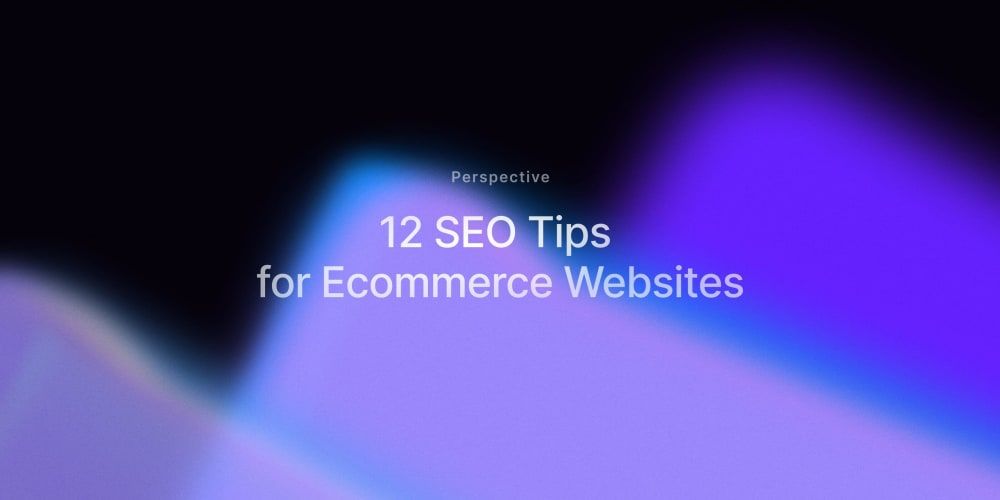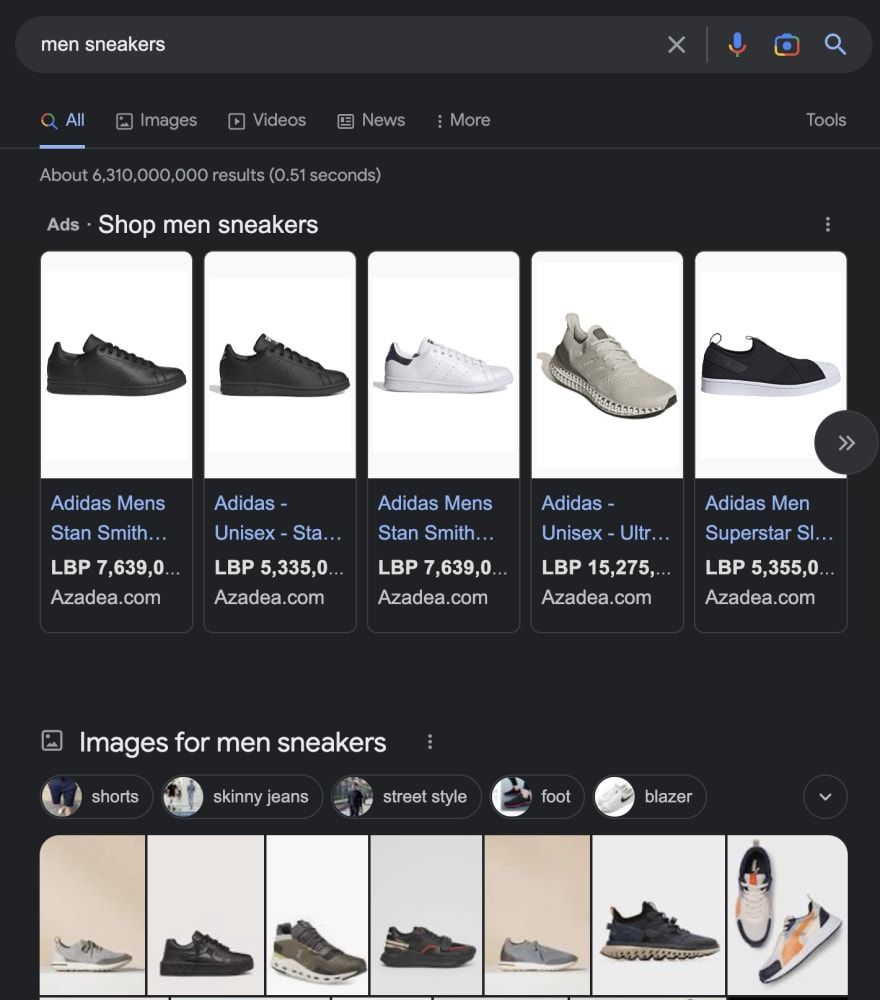
12 Tips for Optimal Ecommerce SEO

Search Engine Optimization (SEO) is everything you do to ensure that your website or ecommerce
Search Engine Optimization (SEO) is everything you do to ensure that your website or ecommerce platform ranks higher on the search engine result page. It is the process of becoming more visible in search engine results for certain keywords thereby improving organic traffic to your ecommerce website.
There are different types of SEO strategies that an ecommerce website owner should be aware of and implement to increase traffic on their platform. These strategies include but are not limited to on-page, off-page, and technical SEO.
This article shares some ecommerce SEO tips that can help increase your overall organic traffic from search engines like Google to your online store. This article only focuses on on-page and technical SEO.
On-page vs Technical SEO
You are more likely to generate more organic traffic to your website when you combine more than one SEO strategy. Employing more than one SEO strategy has been proven over time to be more effective and the results are often exponential.
What is On-page SEO?
This aspect of SEO involves all measures taken to optimize web pages for more visibility on Google search result pages for a target keyword. This is very important because it helps Google and other search engines to better understand the content on your web pages and what niche your website belongs to.
What is Technical SEO?
Technical SEO refers to high-level optimization of an ecommerce store especially backend services to improve for faster crawling and indexing by search engine crawlers. It goes beyond a blog post to under-the-hood activities like fixing broken links, internal linking, cleaning up duplicate content, etc. A good technical SEO is very important to maximizing your ecommerce site's potential.
Importance of SEO for Ecommerce Stores
Search engine optimization can positively impact the bottom line of the business when done right. Every digital store owner should pay attention to ensuring good SEO practices as it has many benefits including:
- Increased brand visibility: When ecommerce SEO is done right, brand visibility naturally increases. This means that more online shoppers can discover your products and services when they search keywords related to your business.
- Generate quality leads: An increase in traffic would lead to quality lead generation. You can pick up leads as to what buyers want from the keyword click-through, product searches done on your digital store, etc... This would help you understand what a potential customer wants and how you could convert them.
- Higher sales: The marketing funnel is complete when users take action to buy. With your brand and business exposed to a lot more people, the chances at making more sales increase. This is often the end goal: more sales.
Technical SEO Tips for Ecommerce stores
Improve site speed
A critical factor for ranking is the load time of web pages. Your ecommerce storefront will move higher or lower on Search Engine Results Pages (SERPs) depending on how fast content from your web page loads.
Google's PageSpeed Insight tool can give you a proper diagnosis of your ecommerce storefront’s performance and areas that could be improved.
You can significantly improve your ecommerce storefront’s load time when you do the following:
- Remove unused dependencies. This includes unused JavaScript libraries or external plugins that you integrate into your storefront.
- Optimize images, and minify your codebase (HTML, CSS, and JavaScript).
- Use a content delivery network (CDN) to serve the storefront’s resources.
- Enable compression on your website.
Use of simple URL structure
A good URL structure should be simple and human-readable as recommended by Google . It should indicate page hierarchies as well as contain keywords relevant to the content of the web page.
A bad URL structure looks something like this:https://www.footwears.com/index.php?id_mds=419&clcp27eapas compared to a good onehttps://footwears.com/catalog/men/formal-shoes/.
Here are a few reasons why a good URL structure is important.
- Human-readable URLs are prioritized by search engines and thus are often placed at the top of SERPs. So, they naturally get a higher click-through rate (CTR).
- Search engines pick up keywords in a URL and it’s factored in during ranking.
- A descriptive URL can serve as anchor text and is very good for building organic backlinks from other websites.
Proper use of sitemaps
To ensure that search engines crawl important pages of your ecommerce storefront, a sitemap is needed. A sitemap lists out all important pages on your website making them easily accessible to search engines for crawling and indexing.
Sitemaps are not just for search engines. They also help users navigate and discover web pages easily on your website. Beyond creating a pathway for accessing web pages on your site, sitemaps can help you spot indexing problems.
When your sitemap is submitted on the Google Search Console , you can detect issues like which links are broken, why some pages were not indexed, or duplicate content. In the end, your SEO is better for it if you can spot and resolve issues on your site quickly through a sitemap.
Ensure site security
Google considers HTTPS as a ranking factor and also ensures that websites accessed from its SERPs are secure. It is very important to keep your site secure by using HTTPS everywhere for connections within and outside your website.
Transport Layer Security (TLS) ensures connections within your site and outside are secure and encrypted. This can be activated by using a Secure Socket Layer (SSL) certificate for your domain. This helps increasing your chances of ranking higher on SERPs.
Sensitive user data shared on the platform like addresses, and credit card details are encrypted and protected.
Use of canonical tags
Google hates duplicate content and canonical tags are used to tell Google which URLs should be prioritized, crawled, and indexed. Canonical tags make it easier to track metrics for a particular product.
You can specify a canonical URL of a page by adding therel=”canonical”link tag in the<head>section of the web page. Thehreflink should be pointing to the main content. Below is a link with a canonical tag:
<link rel="canonical" href="https://footwears.com/catalog/men/formal-shoes/"/>
Use robots.txt file
There are certain pages you would not want search engine bots to crawl on your site. You can block out these pages from being indexed by using a robots.txt file.
Some pages you might want to block out from indexing are your admin, cart, checkout, form, etc. Robots.txt file specifies which pages on your website can be crawled and those that should not be crawled.
Enable structured data
The use of structured data is another way to ensure that Google truly understands the content of your website by explicitly dropping clues about what a web page is about.
Structure data improves the chances that your products appear as rich snippets in search results. These structured data provided by you like the product name , price , rating, and availability help Google rank your product higher for more visibility.

Google specifies how you can add structured data to your site . Structured data can be served as JSON-LD, RDFa, and Microdata.
Below is an example of JSON-LD structured data for a men's sneaker:
<html>
<head>
<title>Casual Fashional Men Sneaker</title>
<script type="application/ld+json">
{
"@context": "https://schema.org/",
"@type": "Product",
"name": "Casual Fashional Men Sneaker",
"description": "Function: Breathable Gross weight: 0.5kg Sole material: PVC Applicable sports: good How to wear: Front tie Heel shape: flat Inner material: cloth Applicable scene: leisure Upper Height: Low",
"review": {
"@type": "Review",
"reviewRating": {
"@type": "Rating",
"ratingValue": "3",
"bestRating": "5"
},
"author": {
"@type": "Person",
"name": "Jumia Seller"
}
},
"aggregateRating": {
"@type": "AggregateRating",
"ratingValue": "3.4",
"reviewCount": "54"
}
}
</script>
</head>
<body>
</body>
</html>
Go mobile-first
Google now uses a mobile-first approach when indexing web pages. This means that ecommerce stores that are mobile-friendly have better chances of ranking higher in SERPs.
Over the past few years, mobile search has increased and Google is ensuring that mobile users have a good user experience by ranking mobile-friendly sites higher.
When setting up your digital store always ensure that the design is responsive and dynamic. You can score points here for better SEO ranking.
On-Page SEO Tips for Ecommerce Stores
Focus on long-tail keywords
Long-tail keywords are more descriptive and specific keyword phrases used in search queries by users and show the intent of a buyer to purchase a particular commodity.
Long-tail keywords have a low keyword difficulty score and are less competitive, this would give you a chance to rank higher in SERPs and higher conversion rates.
You could target long-tail keywords like "snow boots for women", and "waterproof snow boots for ladies", instead of short-tail keywords like "snow boots".
Writing a good meta description:
Meta descriptions are important because they give a summary of what your web page is about to users and are also served in search results snippets.
According to Moz, the optimal meta description should be kept between 50 and 160 characters to avoid being truncated.
This means meta descriptions should be succinct and should capture the necessary keywords related to the web page and should be unique throughout your website's web pages.
Good product description
You should endeavor to have a good product description with the needed keywords (short and long) for all products.
Each product page should have unique product descriptions as duplicates are impediments to a higher ranking on SERPs.
Know who your ideal customer is and write clearly how your product and its features can be of benefit to them.
Use of alt text for product images:
"A picture is worth more than a 1000 words." That's true because high-quality product images can increase sales for products on your site.
Alt texts are critical as search engines understand more about the content on your web page for better indexing of your site for relevant keywords.
An alt image describes an image when it fails to load properly and screen readers can describe the image to users with poor vision for a better user experience for potential customers.
Use Medusa to Ensure Good SEO
Medusa is an open source composable commerce platform. This essentially means that the frontend and backend of your ecommerce store are decoupled. It provides a variety of customization for merchants and a seamless developer experience when setting up your digital store.
Medusa helps ecommerce websites improve their SEO in the following ways:
Ability to use modern technologies like Jamstack
Unlike the traditional ecommerce platform, Medusa embraces modern technologies like Jamstack due to its decoupled architecture. This allows more load to be pushed unto the client-side than the server-side.
This means that the requests made to the server are reduced thus improving load time and performance. Faster load times and performance is key to SEO as user experience improves.
Completely customizable architecture
Medusa’s architecture is customizable and extensible for developers. It also allows for easy integration of third-party services.
There are several third-party tools that can improve your digital store’s technical and on-page SEO. You don’t have to miss out on CMS services like Contentful because Medusa allows for seamless integration with such services.
You can boost your Medusa ecommerce platform SEO by integrating with services like Contentful because it provides rich text features and the ability to manage product data such as URLs, rich descriptions, and localization, among other attributes.
Complete control of the storefront
It can be a big hassle to optimize website speed, URL structure, and content delivery on traditional ecommerce platforms as developers often don’t have control over these details.
On the other hand, developers using Medusa have full control over the storefront and the ecommerce platform as a whole. They can implement changes fast and easily to their storefront build as best suited for optimal search engine visibility.
Developers can also choose frameworks like Next.js that boost the storefront’s speed and SEO, which would lead to hire ranking on search engines.

